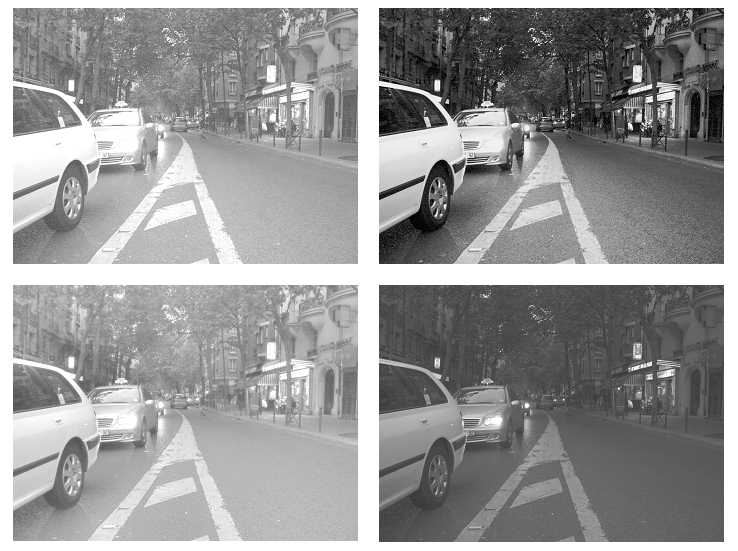Road visibility
studies can take strong benefit from the use of computer graphics
images, through driving simulation and psychovisual experiments. Unfortunately,
the visual environment of the driver is far more complex than any
display device is able to render (luminance dynamic range, luminance
values, color gamut, color values). In a daytime driving scene, the
luminance can be as high as 100000 cd/m². In a night-time driving
scene, the luminance can be as low as 0.001 cd/m² and as high
as 100000 cd/m² at the same time, because of the headlights of
on-coming traffic. A LCD monitor is usually unable to display luminance
below 0.1 cd/m² and beyond 200 cd/m². The CRT projectors
usually used in driving simulator are even worse in displayable luminance
dynamic range. Due to the size of the projection area, the maximum
luminance can be as low as 10 cd/m². It is essential to compress
the luminance dynamic range of images to fit the display device characteristics.
An operator which maps real world luminances to target display luminances
is called a tone mapping operator (TMO). It is designed to reproduce
the overall impression of brightness and contrast of the real world
onto limited dynamic range display devices.
The problem of
tone reproduction is not a recent one. It was first tackled by photographers
who needed to process their pictures so that they fit the visual appearance
of the photographed scene. For computer graphics images, many [TMOs]
have been proposed for compressing the dynamic range of an image so
that it can be displayed effectively. There are two main categories
of such operators: spatially uniform (also known as global) and spatially
varying (also known as local). Global operators apply the same transformation
to every pixel of the image regardless of their position in the image.
Local operators apply different transformations to different parts
of the image depending on their properties. Des opérateurs
proposent également une solution dynamique.
Picture, taken
with a calibrated digital camera, of an urban scene in the evening,
processed by different tone mapping operators, Lmax=478 cd/m²
and Lmin=0 cd/m². The image on the top left is processed by the
[Ward] 's linear operator, the one
on the top right by the [Larson et al.]
's global operator, the one of the bottom left by the [Pattanaik
et al.] 's local operator and the one of the bottom right by the
operator I have developed.
